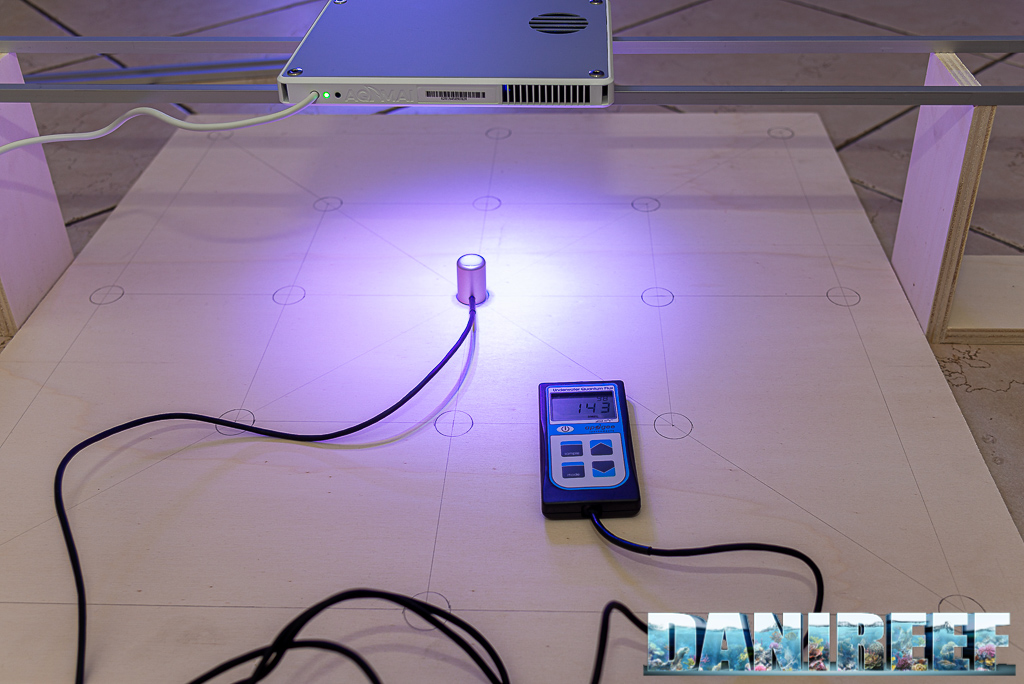 After having tested the older sister, it’s now the time for the smaller LED ceiling light Aqamai LRS, a single cluster model that seems to be perfect for nanoreef. Let’s see the tests in our DaniReef LAB.
After having tested the older sister, it’s now the time for the smaller LED ceiling light Aqamai LRS, a single cluster model that seems to be perfect for nanoreef. Let’s see the tests in our DaniReef LAB.
This ceiling light is the same as the Aqamai LRM; the only difference is the number of clusters, 2 for the LRM and 1 for this LRS. So most of this presentation will be similar if not the same as the one for the Aqamai LRM (that you can read here), you can also see how the ceiling light behaves with double the power.
Technical characteristics of the Aqamai LRS
It has 8 LED colorations divided into 6 channels. In total it has 15 LEDs in the single cluster. It’s pretty interesting that the LED “cool white”, 3 Nichia NVSW219C of CRI > 70 and 180 lumen/watt, a very high value.
The remaining are 1 UV SemiLEDs of 405 nm, 2 Indigo SemiLEDs of 415 nm, 3 Royal Blue Nichia NCSC219BT (very beautiful, I have to say), 3 Blue Nichia NCSB219BT, 1 Green Nichia NCSG219BT, 1 Red-A Nichia NCSR219BT, and 1 Red-B OSRAM Oslon SSL.
- Power: 50 w
- Dimensions: 22x16x2(h) cm
- Selling price: 290 euro vat included ($338 USD)
Construction
The Aqamai LRS is perfectly built. It’s very thin and it has an active cooling system that works based on the temperature of the LED. If the temp begins to get too high, the ceiling light goes in standby mode, before it can damage the LED. This can happen if the ceiling light has gotten dirty and has dust in the ducts. In this case, you just need to clean it out before putting it back to work. 
The programming
The ceiling light can be used through an app downloadable for Apple or Android that uses its own WiFi network. It can be connected to your home network, so you can control it directly with your device without changing the network. The app works very well and it can be used easily. It has different preset programs depending on the corals in the tank: SPS, LPS or softies. 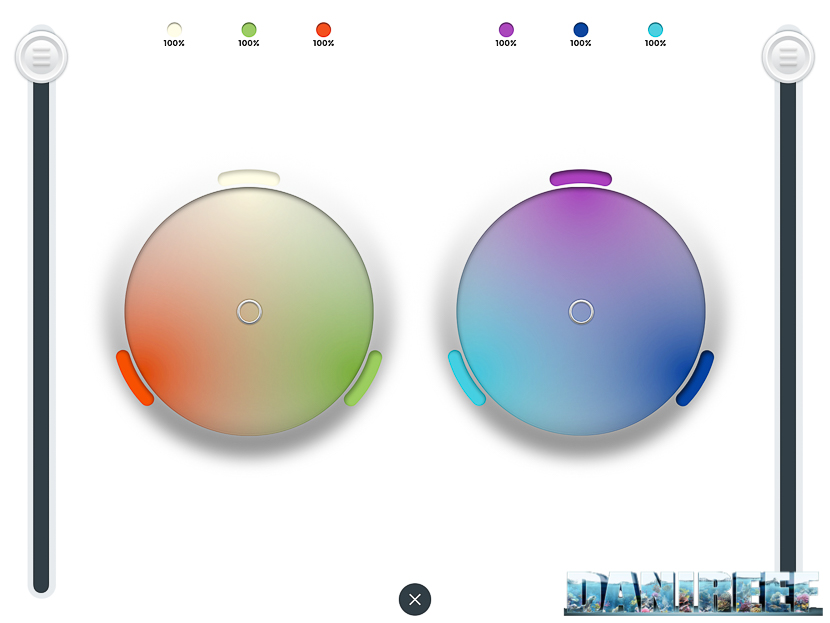
Pictured above is the manual command as it appears on iPad, where the two sliders represent the power and the two circular sectors the color gradation.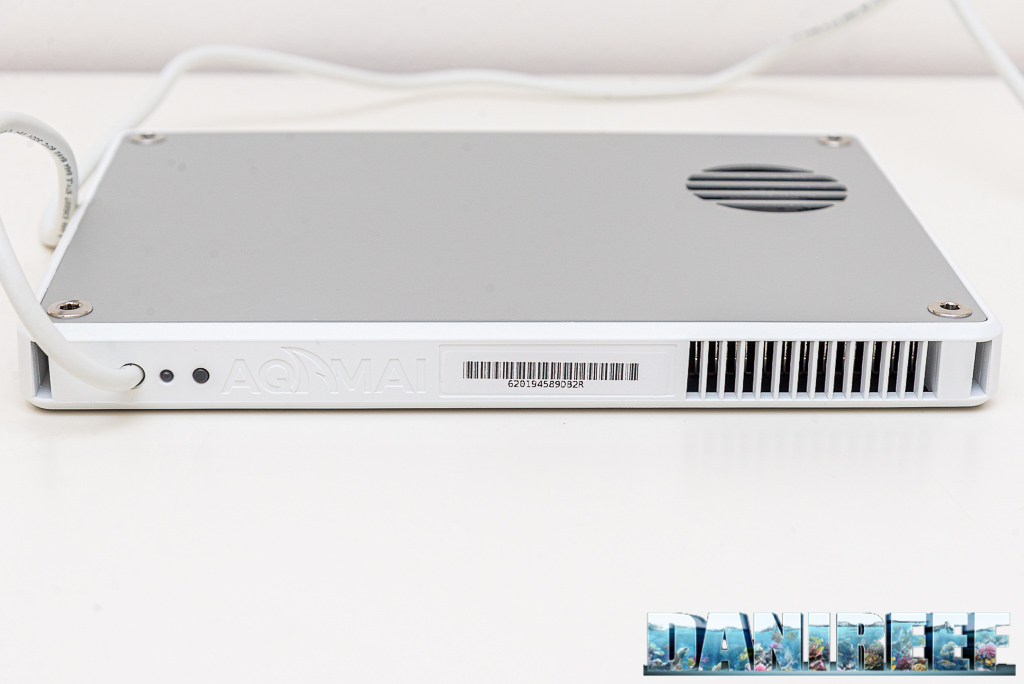
Before we see the values we collected, let’s take a closer look at the 6 available channels and their consumption:
Channel 1 Cool White
Channel 2 Green
Channel 3 Red and Photographic Red
Channel 4 UV and Indigo
Channel 5 Royal Blue
Channel 6 Cyano (Blue)
Our new method DaniReef LAB for PAR measurement
During the long nights spent on our forum (here) we always wondered how could we compare PAR from different ceiling lights. Even though we had the perfect device, the Quantum Meter MQ-510 di Apogee, we only referred to the value measured at the center at about 20 cm away.
The Quantum Meter MQ-510 measures the PAR, expressed in PFFD (photosynthetic photon flux density) in μmol m-2 s-1. This device is calibrated to work underwater, so if it’s in air the measured value has to be divided by 1.32, the dive factor. We have to do the conversion. The values you’re going to see are correct. 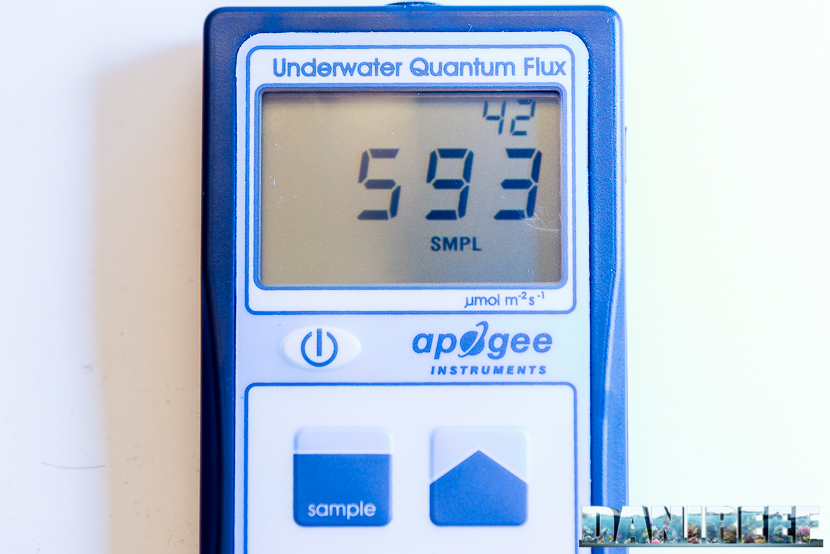
We decided to make a square base of 70×70 cm, we set 17 fiducial points where we placed the Quantum Meter MQ-510 sensor, and we also made 3 lifts of 20, 40, and 60 cm for the ceiling light, in order to have the same distance from the sensor. This allows us to create the curves which can be compared to other ceiling lights, all tested at the same distances. Note that this distance is measured from the base of the sensor to the ceiling light. In reality, it should be decreased by 3.5 cm which is the height of the measurement cylinder and increased by 0.5 cm which is the dimension of the spacers that lift the ceiling light. 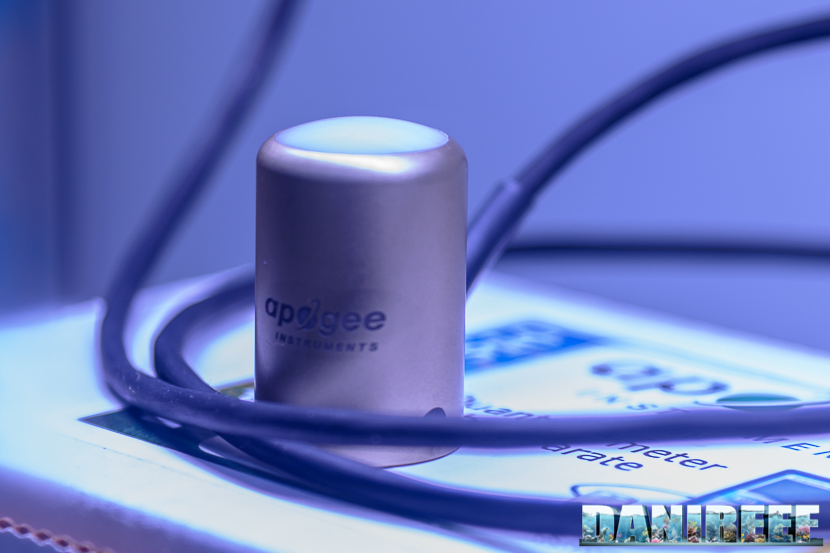
In total the three measurements are made at 17, 37, and 57 cm of distance. Because they are done in air they will be corrected.
PAR measurement at 17 cm
This is the test setup. On the bottom is the chart and the device, and at the top is the ceiling light placed on the aluminum bars.
Here are the collected values: 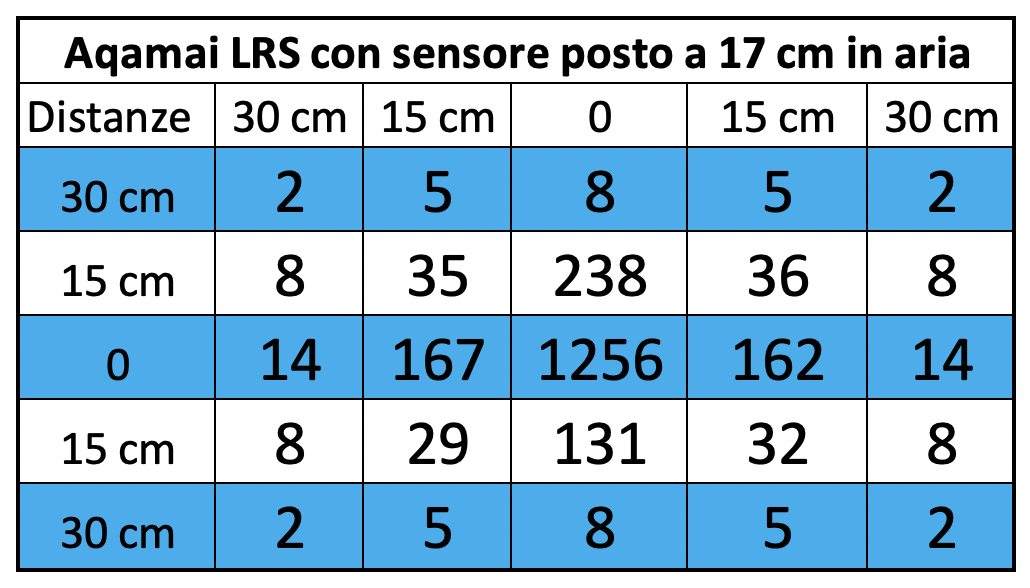
And here is the corresponding chart, we used the same scale for ceiling lights of similar power, so if you see the chart for the Cetus 2, you’ll find the same rating scale. 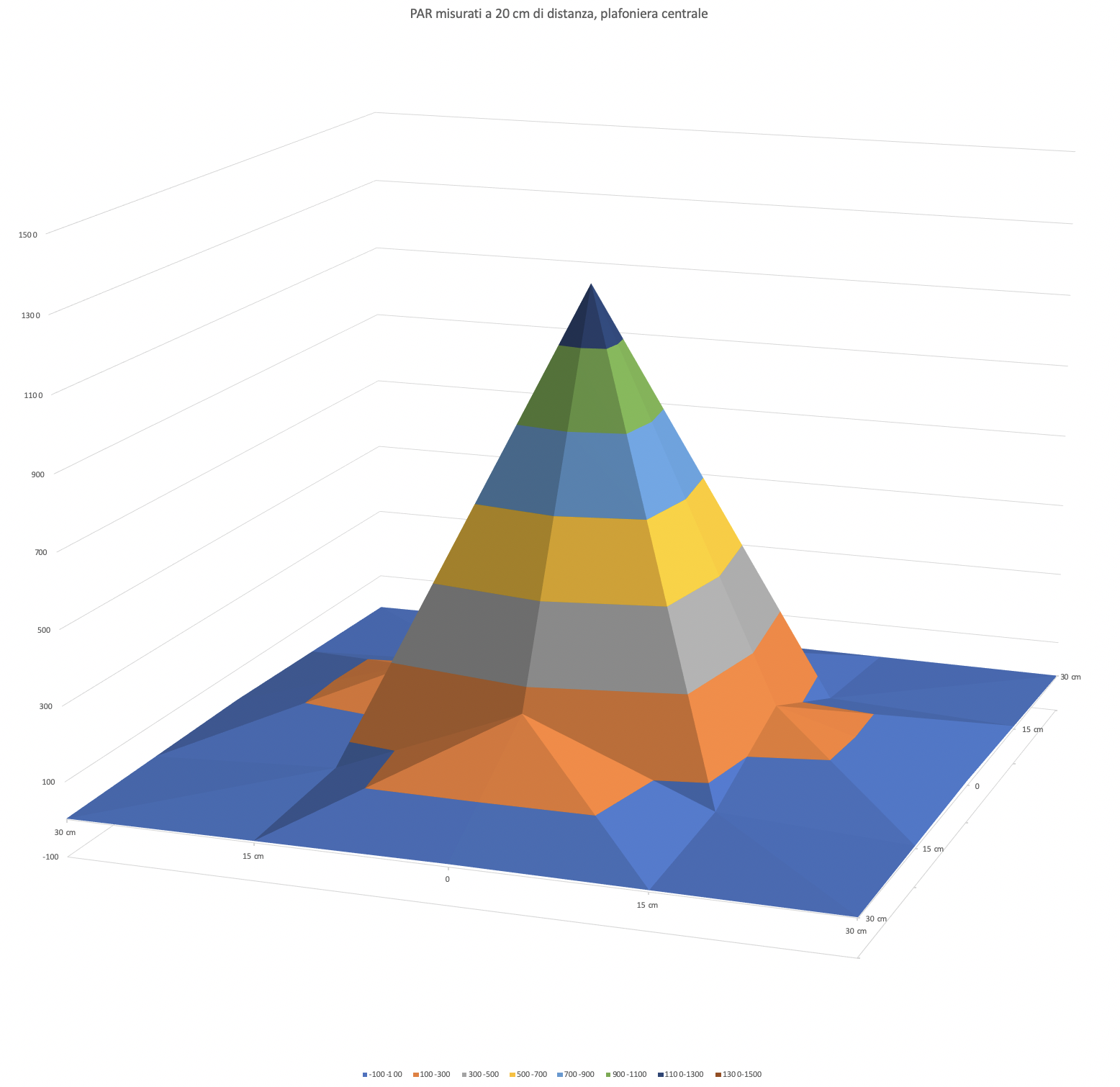
Because this ceiling light is very close to the sensor and it is a single cluster, the PAR decreases very quickly on the sides, as you can clearly see from the chart. It stands out that the peak value, measured in the middle, is superior to the Cetus 2, that has more power but a better spread for great coverage of the aquarium.
PAR measurement at 37 cm
This is the test setup. On the bottom is the chart and the device, and at the top is the ceiling light placed on the aluminum bars.
Here are the collected values: 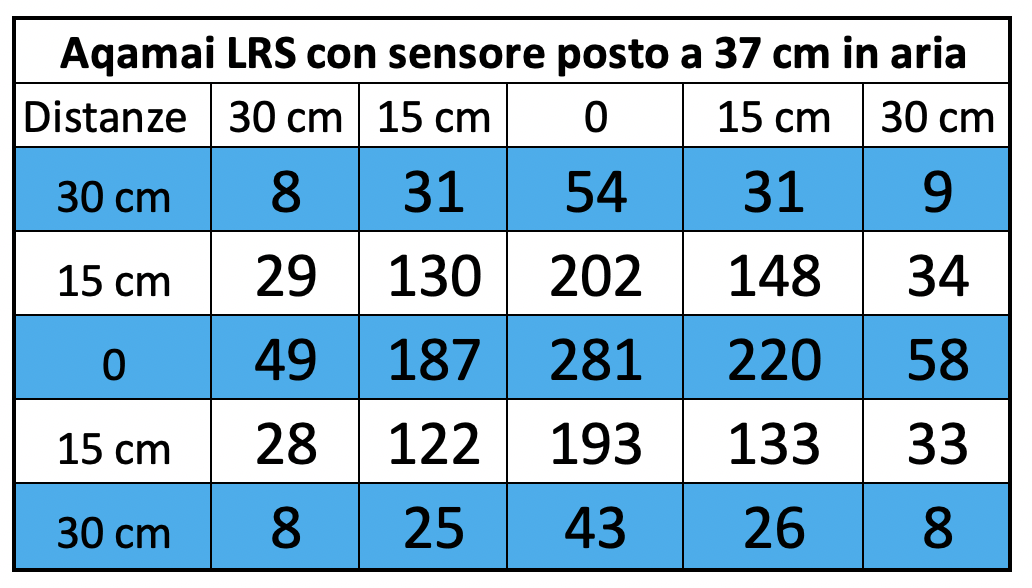
And here is the corresponding chart. 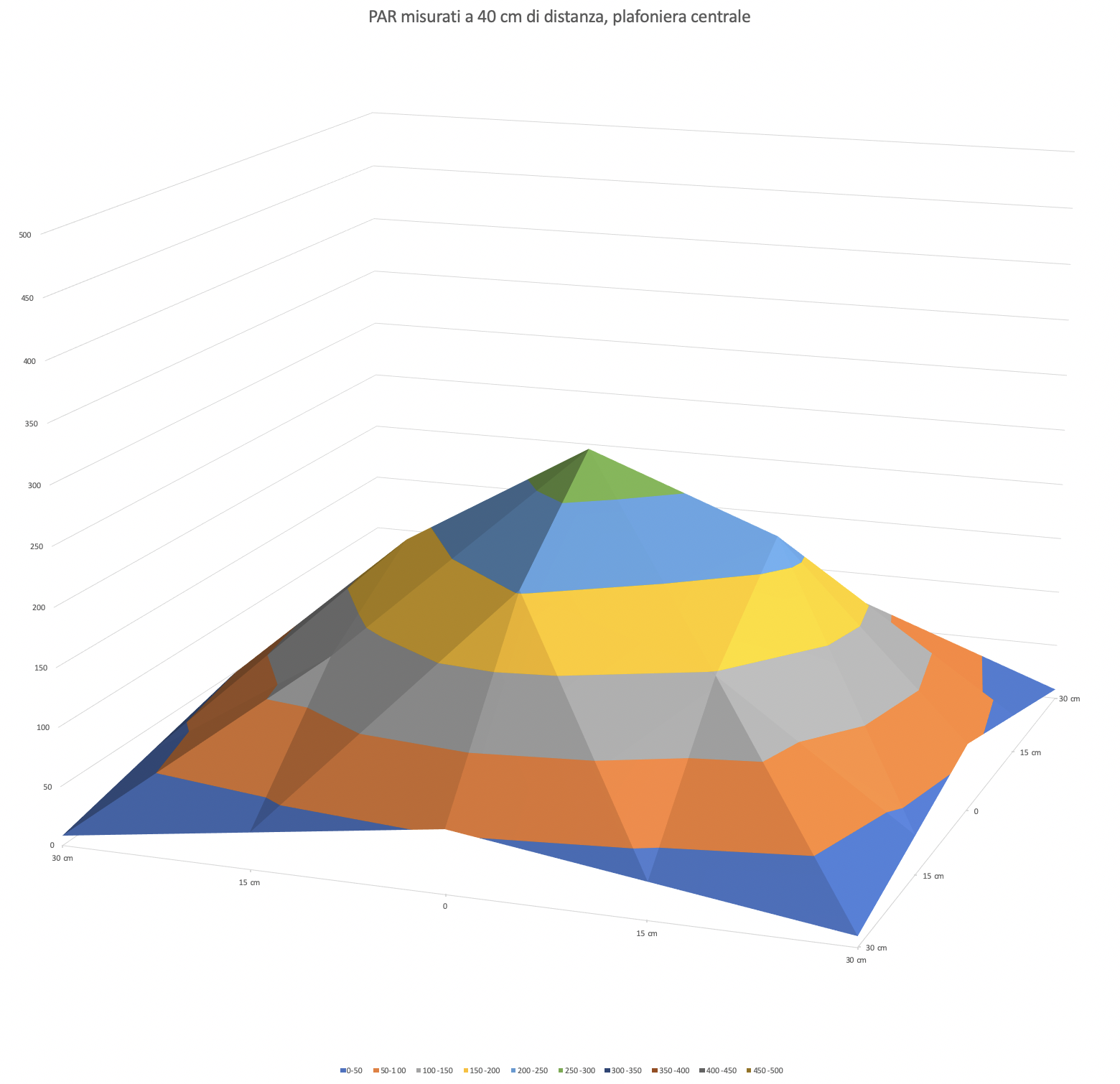
With a bigger space between the ceiling lights and the sensor, there is a decrease in the difference between PAR in the middle and on the sides. The light spreads, but the central value decreases from 1256 to 281 μmol m-2 s-1.
The coverage is much more complete.
PAR measurement at 57 cm
This is the test setup. On the bottom is the chart and the device (from this distance the device it is very visible) and at the top is the ceiling light placed on the aluminum bars. Even visually, the illuminated area is a lot wider, so the specific power per cm decreases.
These are the collected values: 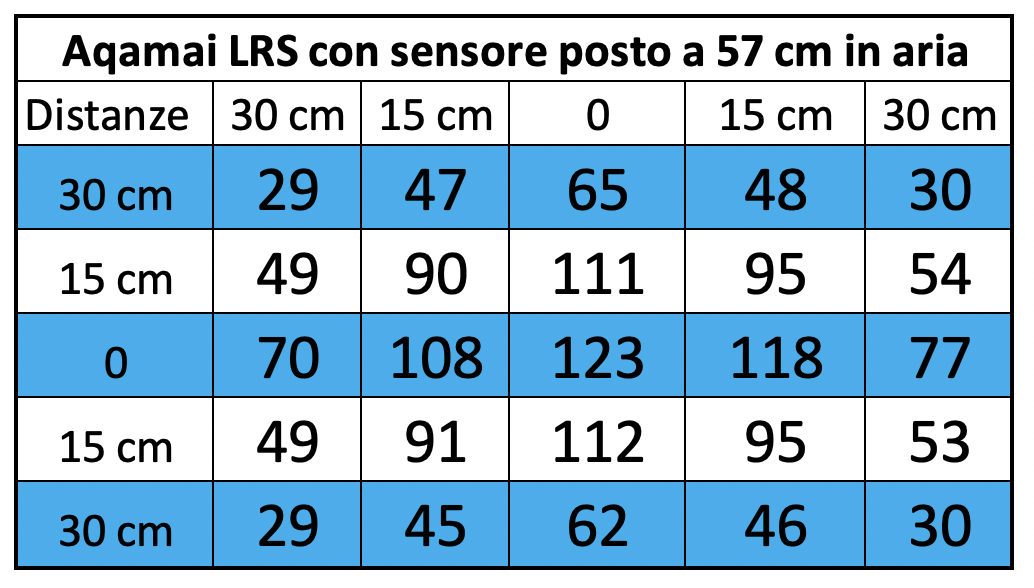
And here is the corresponding chart. 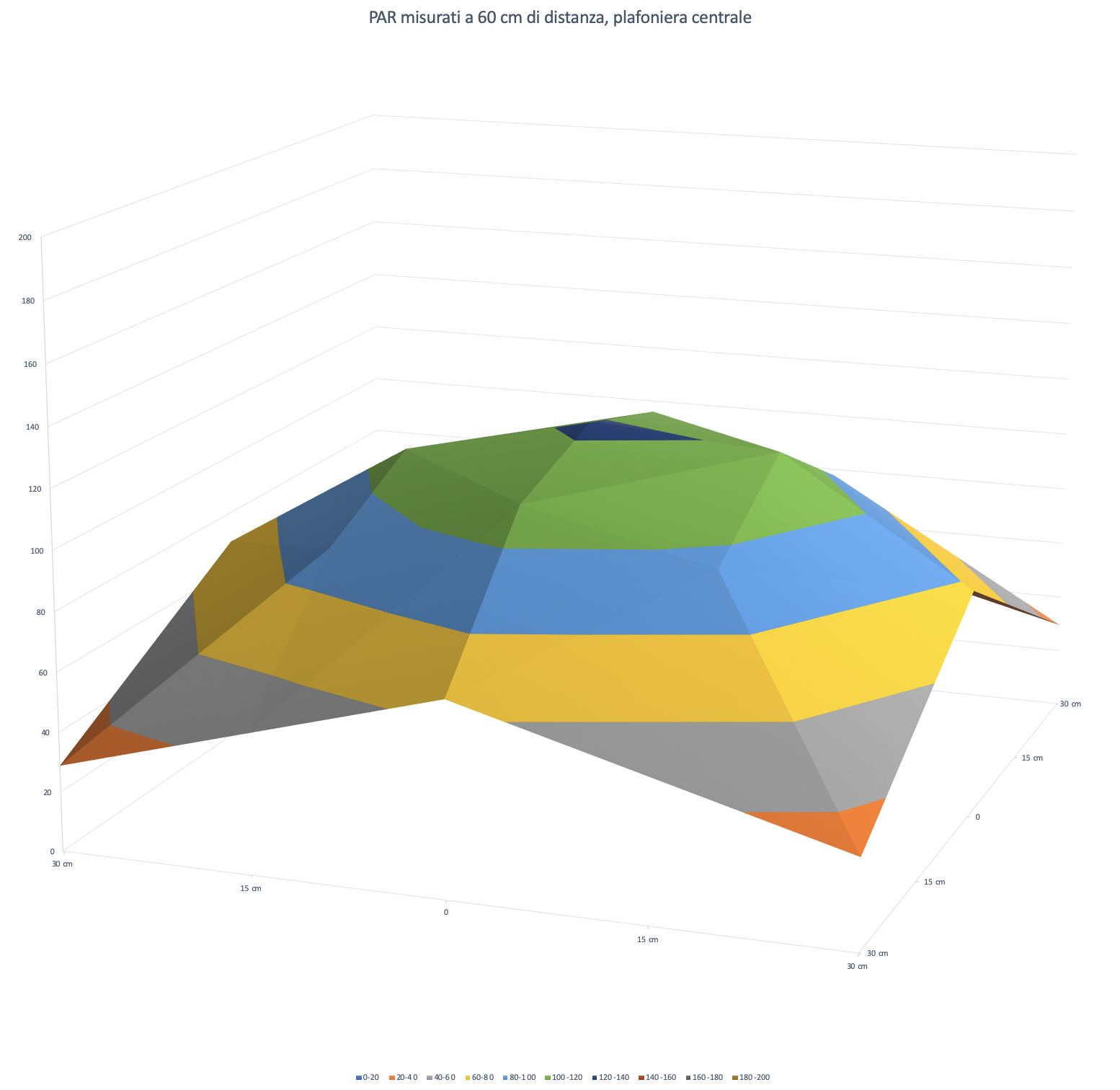
Increasing the space between ceiling light and sensor even more further decreases the difference between PAR in the middle and on the sides. We have more uniformity, as expected, but the final power decreases a lot. The light spreads, while the central value decreases from 1256 to 281 to 123 μmol m-2 s-1.
Now the coverage is more complete.
The PAR in the middle in the different configurations
Let’s continue with our technical measurements. We can see how, in a chart, the PAR collected in the middle decrease with the three different distances of our tests. 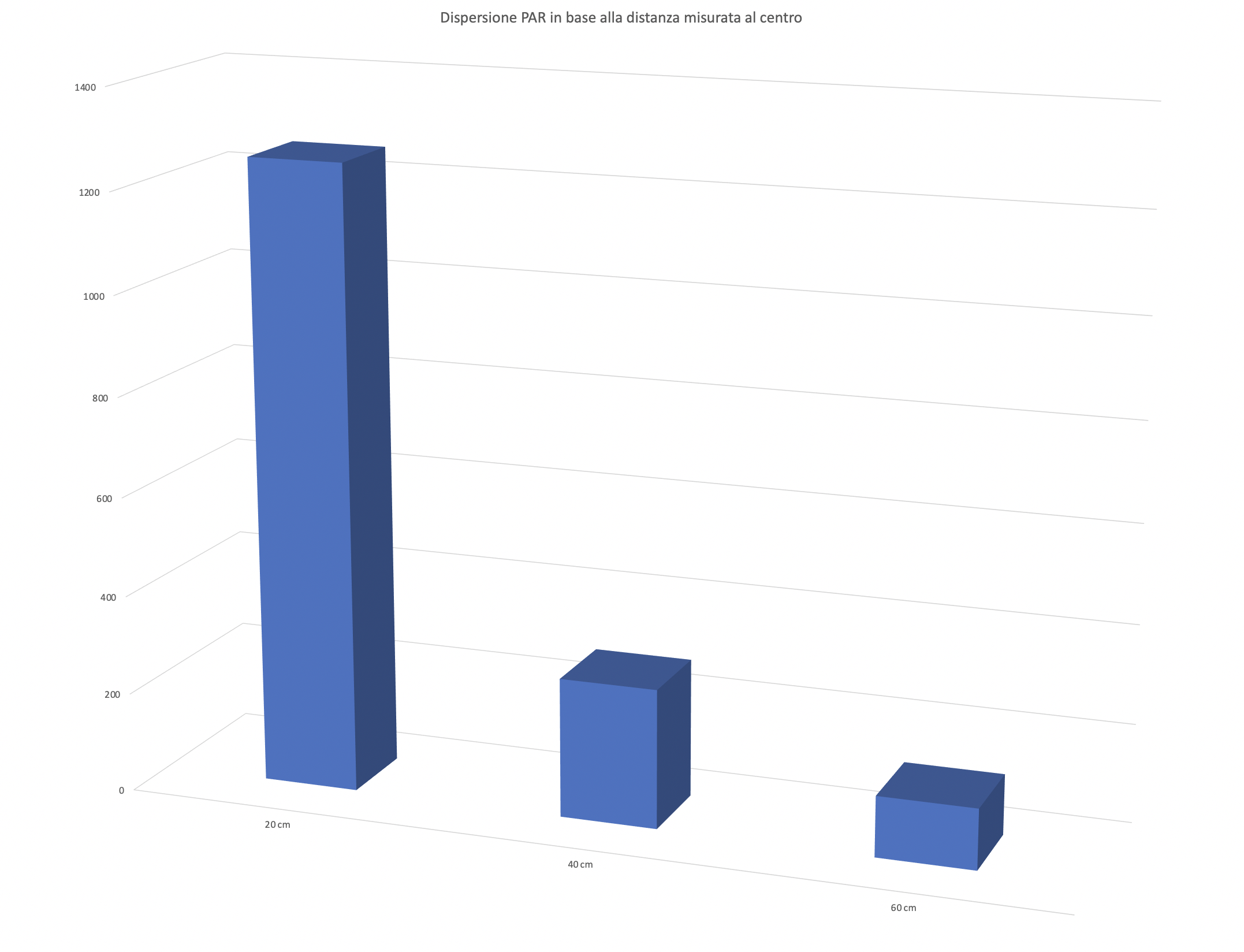
Energy variation of the Aqamai LRS depending on the distances
This is the most significant and most comparable data: the energy variation. We calculated the volumes of the three surfaces previously seen. It’s obvious that moving away from the ceiling light decreases the PAR, and that the light illuminates a wider space. In this way you can consider all the light energy contained in the 60×60 cm area subtended by the ceiling light. An it’s clear that the three values of 275.881, 311.548, and 254.283 assume a different connotation compared to the values in the middle. When the first ones decrease because of the increase in distance, the subtended area, that is the energy, at first increases, because the main part is concentrated in the middle, then it decreases because part of it spreads more over the area.
In fact, looking at the values of the three curves you can see that at the sides there is more light at 57 cm than at 37 cm.
Values per channel in the middle of the three distances
We also measured the values per each channel, but only in the middle, in order to give you an idea of the contribution of the different channels on the PAR produced. 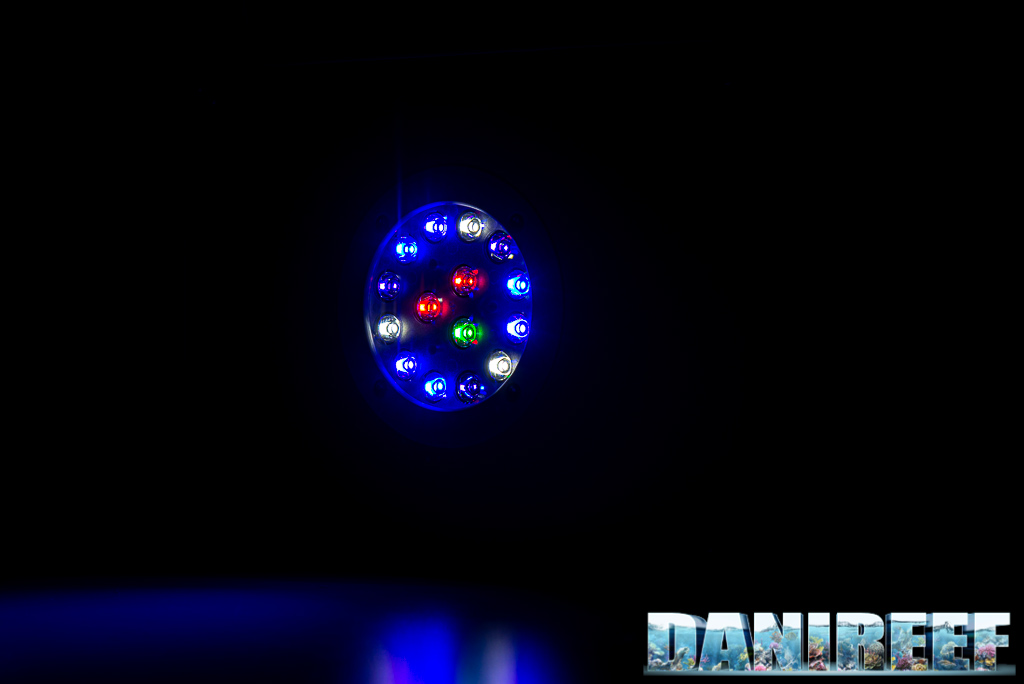
Let’s see the measured values:
| Distance = 17 cm | Distance = 37 cm | Distance = 57 cm | |
| Channel 1 cool white | 336 μmol m-2 s-1 | 73 μmol m-2 s-1 | 32 μmol m-2 s-1 |
| Channel 2 green | 36 μmol m-2 s-1 | 8 μmol m-2 s-1 | 4 μmol m-2 s-1 |
| Channel 3 red | 130 μmol m-2 s-1 | 29 μmol m-2 s-1 | 12 μmol m-2 s-1 |
| Channel 4 uv and indigo | 58 μmol m-2 s-1 | 14 μmol m-2 s-1 | 5 μmol m-2 s-1 |
| Channel 5 royal blue | 373 μmol m-2 s-1 | 86 μmol m-2 s-1 | 37 μmol m-2 s-1 |
| Channel 6 cyan | 358 μmol m-2 s-1 | 85 μmol m-2 s-1 | 37 μmol m-2 s-1 |
The blues have an higher number of PAR than the whites, and Blue and Cyan are predominant for the PAR. The green doesn’t have a real impact.
Comments and questions, as always, are welcomed. [Translated by Agnese Poggi]
How do these numbers change in an aquarium?
This is a good question. At first we thought that we could transport these values to the aquarium tout-court. We filled the aquarium, inserted the probe, and redid the measurements. We fazed but, as we have already said, we’re going to talk about that in another article. Basically, while at 20 cm the result is practically the same, but as we progressed, thanks to the glass and the water itself reflecting the light, we found up to double the values measured in air. Obviously this isn’t a detail that can be standardized, so we think that our method of calculation is the most correct, and the best for the comparison of the coverage of different ceiling lights.
Consumption
The measurement of the consumption was made possible thanks to the useful device RCE PM600 that can also measure the Cos(fi) (or power factor). The result is given in watts. 
Above is the maximum power and below is the Cos(fi). 
The calculation of the absorbed current, or power, is as follows:
Ceiling light Aqamai LRS: 47.59 watt. Considering that at 17 cm the ceiling light has at the middle 1,256 μmol m-2 s-1, we can say that it has a peak value of 26.39 μmol m-2 s-1 w-1 (PAR per watt). A slightly higher value than the Cetus 2.
It’s a little lower than the declared value of 50 w. It can also depend on the rotation speed of the vents.
The comparison with other ceiling lights on the market
Recently we started to use the new Apogee Quantum Meter MQ-510. For this reason we can’t perfectly compare the data of other ceiling lights, because in the past, we used the Seneye probe.
But considering the first ceiling lights we managed to test, we can do an interesting comparison about their produced energy:
| Energy | Cost | Consumption | Energy/€ | Enery/w | |
| AI Hydra 32 HD at 17 cm | 560.185 | 430 | 90,50 | 1.303 | 6.190 |
| AI Hydra 32 HD at 37 cm | 563.232 | 430 | 90,50 | 1.310 | 6.224 |
| AI Hydra 32 HD at 57 cm | 462.614 | 430 | 90,50 | 1.076 | 5.112 |
| Aqamai LRM at 17 cm | 642.649 | 465 | 90,88 | 1.382 | 7.071 |
| Aqamai LRM at 37 cm | 721.676 | 465 | 90,88 | 1.552 | 7.941 |
| Aqamai LRM at 57 cm | 616.470 | 465 | 90,88 | 1.326 | 6.783 |
| Aqamai LRS at 17 cm | 275.881 | 289 | 47,59 | 955 | 5.797 |
| Aqamai LRS at 37 cm | 311.548 | 289 | 47,59 | 1.078 | 6.547 |
| Aqamai LRS ta 57 cm | 254.283 | 289 | 47,59 | 880 | 5.343 |
| Cetus 2 at 17 cm | 409.993 | 215 | 60,68 | 1.906 | 6.756 |
| Cetus 2 at 37 cm | 290.866 | 215 | 60,68 | 1.353 | 4.793 |
| Cetus 2 at 57 cm | 173.651 | 215 | 60,68 | 807 | 2.861 |
| Philips CoralCare at 17 cm | 1.858.572 | 749 | 190,50 | 2.481 | 9.756 |
| Philips CoralCare at 37 cm | 1.340.533 | 749 | 190,50 | 1.790 | 7.037 |
| Philips CoralCare at 57 cm | 933.246 | 749 | 190,50 | 1.246 | 4.899 |
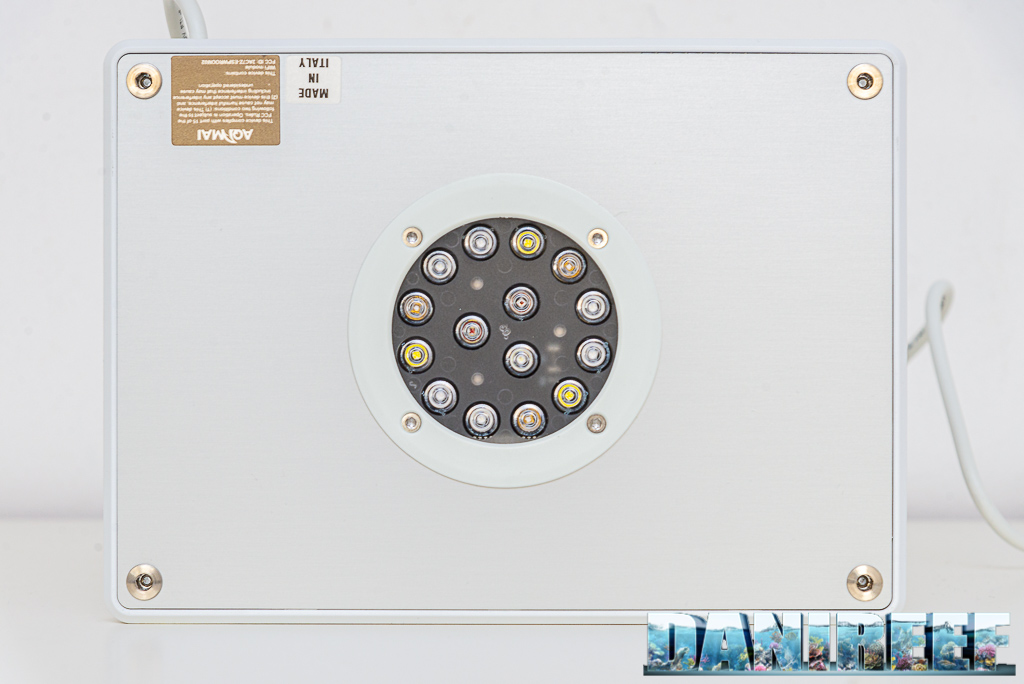
The energy produced by each watt stays constant at the different distances of the Aqamai LRS; it has peak value at 37 cm (in reference to our distances), the distance we need in aquarium, considering that the energy value is very similar above and below.
| Ceiling light | PAR | Watt | Price | PAR/watt | euro per watt | euro per PAR |
| GNC 466 | 696 (Seneye) | 120 | 1.400 euro | 5,8 spread | 11,7 | 2,01 |
| Orphek Atlantik V4 | 1.515 (Apogee) | 226 | 1.099 euro | 6,7 spread | 4,9 | 0,73 |
| Philips CoralCare 2019 | 2.088 (Apogee) | 190 | 749 euro | 11 spread | 3,9 | 0,35 |
| Maxspect Ethereal | 689 (Seneye) | 130 | 500 euro | 5,3 semispread | 3,8 | 0,72 |
| Barra Led Askoll Pure Marine | 237 (Apogee) | 28 | n.d. | 8,4 | ||
| Zetlight UFO ZE-8000 | 791 (Seneye) | 91,5 | 500 euro | 8,6 cluster | 5,5 | 0,63 |
| Aqamai LRM | 2.285 (Apogee) | 90,88 | 465 euro | 25,14 double cluster | 5,1 | 0,20 |
| AI Hydra 32 HD | 1.908 (Apogee) | 90.50 | 430 euro | 21,08 double cluster | 4,75 | 0,23 |
| Cetus 2 | 746 (Apogee) | 60,68 | 215 | 12,29 cluster | 3,5 | 0,28 |
| Aqamai LRS | 1.256 (Apogee) | 47,59 | 289 | 26,39 cluster | 6,1 | 0,23 |
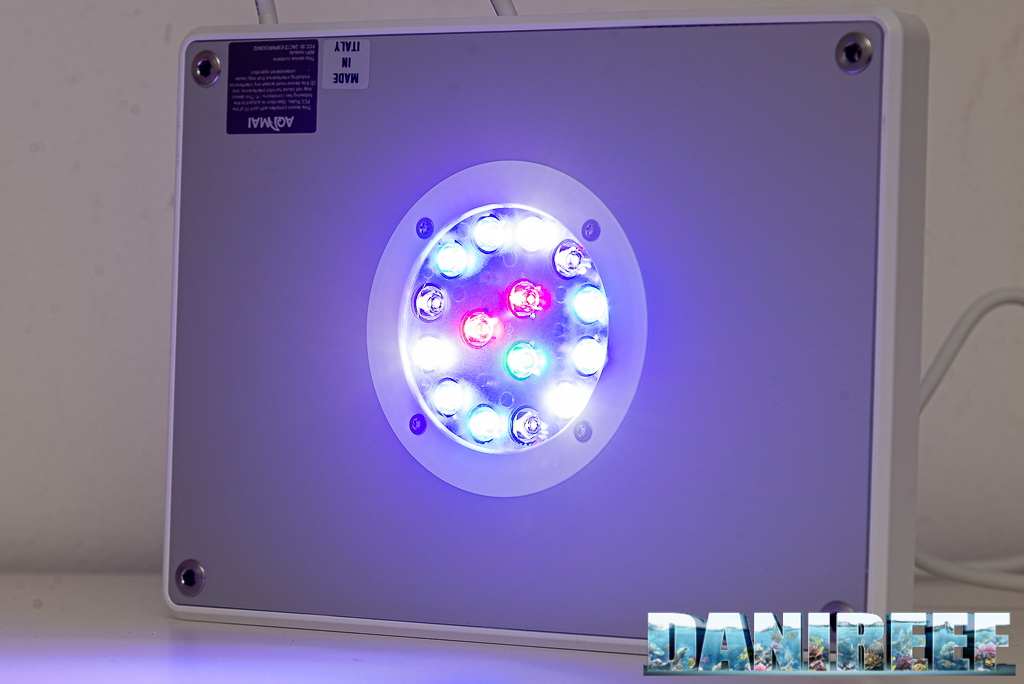
Devices in hand, the Aqamai LRS has the highest PAR per watt relationship we’ve ever had. But speaking of euro per watt they’re average.
Costs
The Aqamai LRS costs 290 euro.
The absorbed power is 47.59 watt, so the relationship of cost/watt is about 6.1 euro per watt. In order to do a comparison with the other ceiling lights, you can consult the following chart:
| Ceiling light | Price | Cosumption | Relationship euro per watt | |
| Cetus 2 | 215 euro | 60,68 watt | 3,5 euro per watt | |
| Philips Coralcare 2019 | 749 euro | 190 watt | 3,9 euro per watt | |
| Maxspect Ethereal | 500 euro | 126 watt | 4,0 euro per watt | |
| Radion XR30w G2 PRO | 790 euro | 170 watt | 4,7 euro per watt | |
| AI Hydra 32 HD | 430 euro | 90,5 watt | 4,75 euro per watt | |
| Radion XR30w G4 PRO | 915 euro | 190 watt | 4,84 euro per watt | |
| OceanLed Sunrise 600 | 870 euro | 180 watt | 4,8 euro per watt | |
| Orphek Atlantik V4 | 1099 euro | 226 watt | 4,9 euro per watt | |
| Radion XR30w G2 | 690 euro | 140 watt | 4,9 euro per watt | |
| Radion XR30w G4 | 760 euro | 150 watt | 5,1 euro per watt | |
| Aqamai LRM | 465 euro | 87,5 watt | 5,1 euro per watt | |
| Zetlight UFO ZE-8000 | 500 euro | 91,5 watt | 5,5 euro per watt | |
| Aqamai LRS | 289 euro | 47,59 watt | 6,1 euro per watt | |
| CEAB Slide & Led | 2.700 euro | 275 watt | 9,8 euro per watt | |
| Sicce GNC 466 | 1.592 euro | 120 watt | 13,3 euro per watt |

The ceiling light is very well built, thin in the construction, and pretty easily programmed (especially if you use the preset programs). The PAR are good especially in the middle, and they’re very efficient. Sure, they’re not incredible at 17 cm, but what sticks out with this ceiling light is the uniformity of energy at the three distances. Perfect for LPS and soft corals in a nanoreef of 50 cm, I wouldn’t go further, while the SPS are precluded, but something in the higher part of the rock. The cost per watt is in the average and the peak PAR expressed are record breaking. The overall energy expressed is good, but it can’t compete with ceiling lights that consume and cost double or quadruple.
Comments and questions, as always, are welcomed. [Translated by Agnese Poggi]



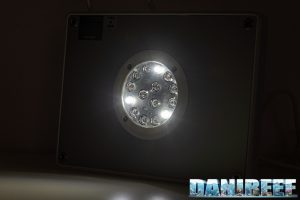
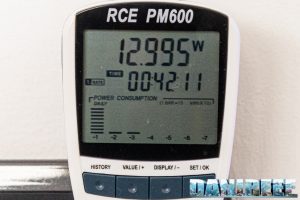

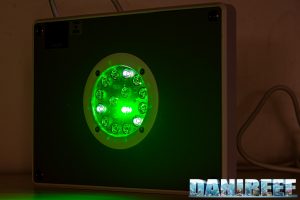
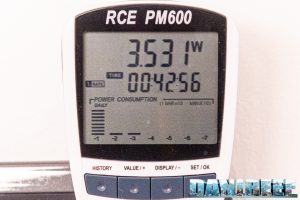
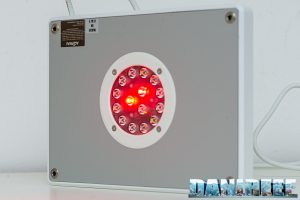
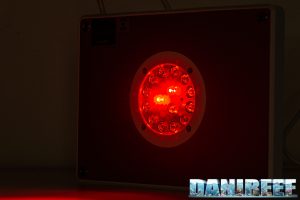
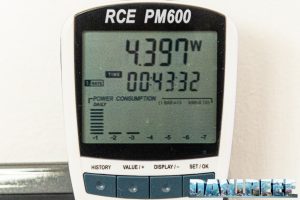
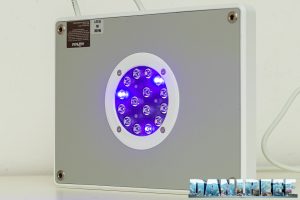
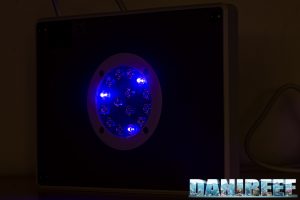
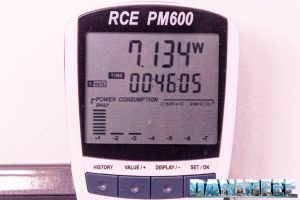
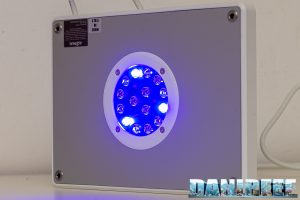

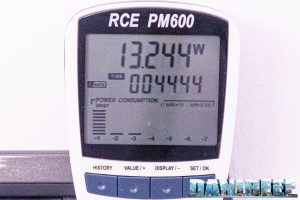
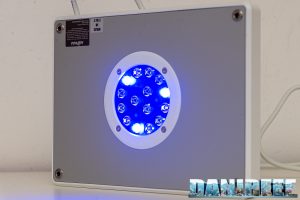

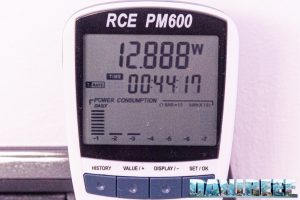
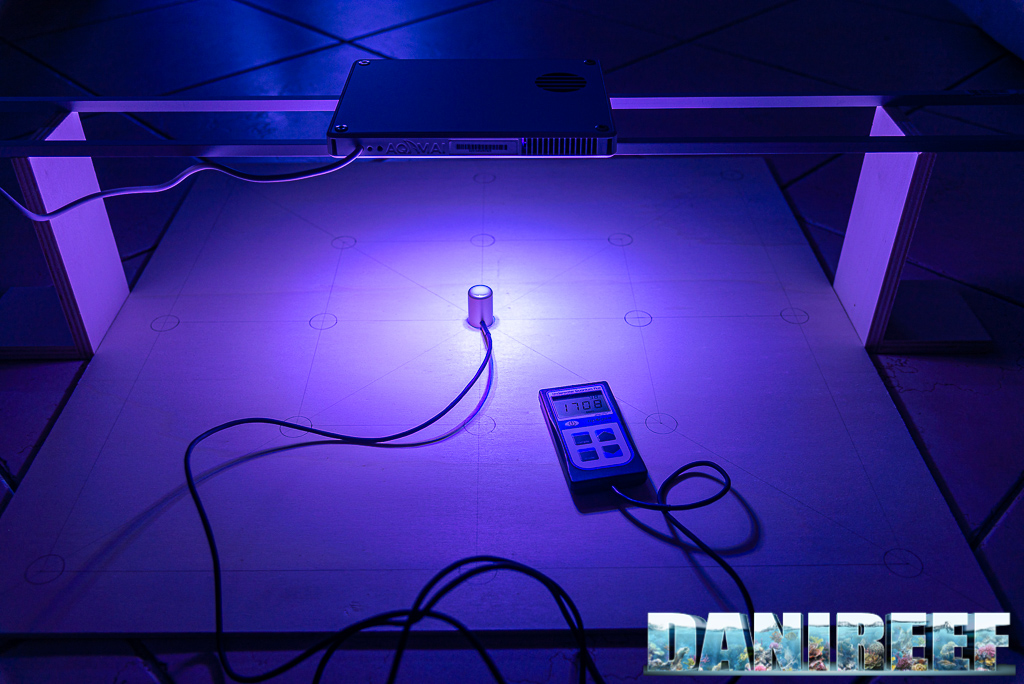

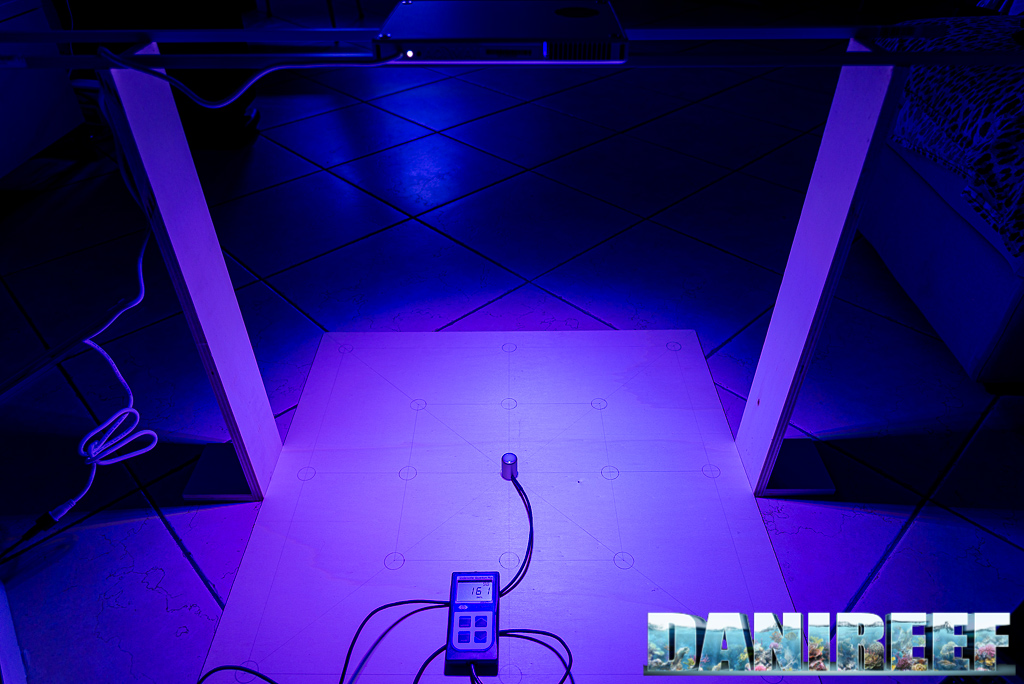
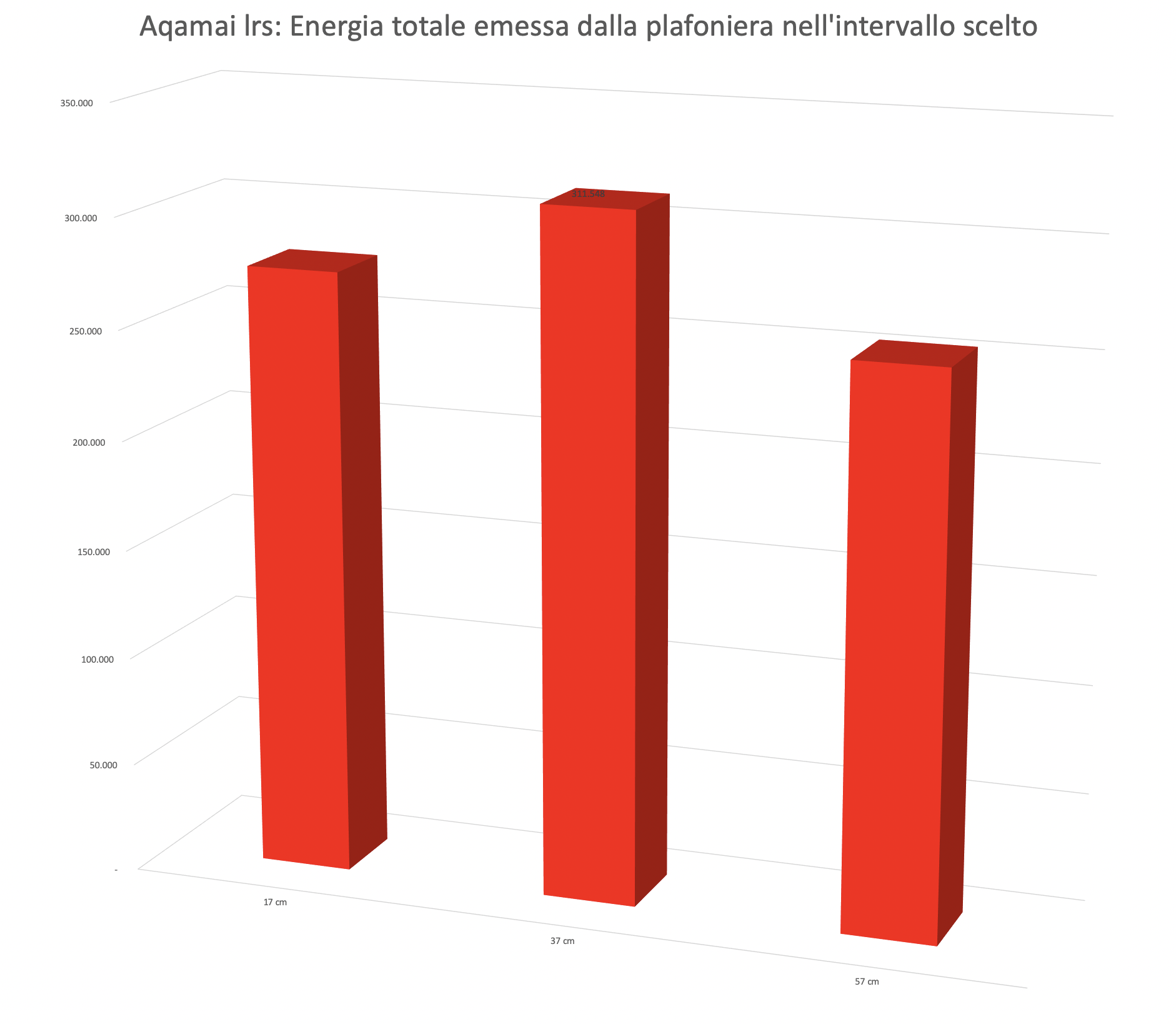









0 Comments